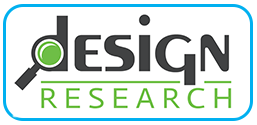“I found your Assortment Styler information last year was very valuable to us as a mid-sized company, like none that I have come across in my experience of working in the industry. I look forward to the new edition.”

Translation: What is consumer research?
You may have seen the title “UX Designer” or perhaps seen reference to “UX Design Research”. Those words first came to our attention when we began to see people with those titles visiting our website and downloading our free presentations. They don’t reach out to hire us. They are looking for ways to conduct research. They copy what we have been doing for years. You see, UX Design means User Experience Design. Designers are looking at what we do as researchers in order to investigate how users experience products. Some of their techniques are borrowed from market research, but the level of sophistication is vastly different.
Before proceeding, here’s a definition from Wikipedia: User experience design is a human-first way of designing products. User experience design (UXD or UED) is the process of enhancing customer satisfaction and loyalty by improving the usability, ease of use, and pleasure provided in the interaction between the customer and the product.
Which is a fancy way of saying consumer research. We’ve been talking to consumers throughout our research careers about what they like and dislike in products and we know that product success depends on all aspects of marketing – advertising, branding, pricing, distribution, etc. - working. Products alone, no matter how good they are, don’t necessarily work without all around marketing support. UX Design research is qualitative. Qualitative research has a place. It is great for generating ideas about things. It can be used to hypothesize about what works in a product and what doesn’t. It can be used to hypothesize new opportunities or to uncover unmet needs. But qualitiative research shouldn’t be used for important business decisions. That’s the realm of quantitative research.
This last point is especially important. At Design Research, we have methodologies to identify specific strengths and weaknesses in products. And, far more importantly, we have sophisticated techniques that identify gaps in the marketplace to identify products that don’t exist but should. We have sophisticated quantitative techniques that are empirical – meaning scientifically valid.
Quantitative offers two key advantages over qualitative. It is replicable. That is to say if we repeat a study under the same conditions we expect the same result. We’ve done this. Our quantitative studies are replicable. The second advantage is reliability. Quantitative research, when done correctly, predicts actual marketplace results. We’ve evaluated this under rigorous testing conditions and proven it.
Qualitative/UX design research has a place. Quantitative has its place. Work with experienced researchers such as ourselves to ensure that your needs are appropriately defined and served.
Call 609.869.1108 or email us today (Rick@designres.com Janine@designres.com) to learn more about how we can help you create winning products that provide excellence in user experience, that delight your customers and build your brand.



